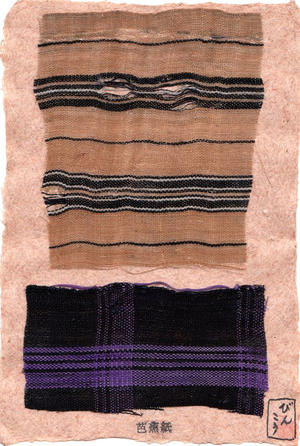Basho-fu of Kijoka

Basho-fu is one of the representative textiles of Okinawa. A record shows that it was woven around the 13th century and in the 15th century the current technique was already in use. It has played an important role as goods for tribute or tax payment during the times of the great maritime trade and the Satsuma invasion.
Basho-fu is woven with threads taken from Basho (banana) plants. Of the three kinds of Basho (Mi-basho, Hana-basho and Ito-basho), Ito-basho is used. The plant is reaped, the fibers are taken, and depending on the quality, they are used for weaving zabuton and cushion covers, table cloths, belts or neckties. Ito-basho grows into maturity in 3 years but approximately 200 tress are required to make one roll. The whole process from growing Basho, spinning threads and weaving is done manually and requires a great deal of time and patience. The completed Basho-fu is light, has excellent air permeability and is most suitable for the hot Okinawa climate.
The main dyestuffs are Ryukyu indigo and Sharinbai. The color of Ito-basho fiber itself becomes the background of the cloth and indigo and brown (Sharinbai) are used for patterns. Kasuri of Basho-fu is made by tying based on the calculation, unlike other Kasuri in which a design pattern is used.
